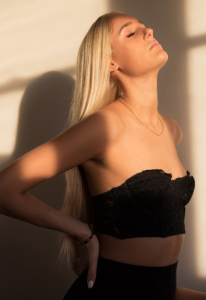The Ultimate Guide to Mixing and Matching Patterns
Introduction to Mixing and Matching Patterns
Patterns play a crucial role in interior design, offering depth, texture, and personality to any space. Mastering the art of combining patterns can transform a room from ordinary to extraordinary. Whether you’re decorating a living room, revamping your wardrobe, or adding flair to your dining area, understanding how to mix and match patterns effectively is key.
Understanding Different Types of Patterns
When delving into pattern mixing, it’s essential to grasp the characteristics of different pattern types. Floral patterns bring a touch of nature indoors, while geometric designs offer modern sophistication. Stripes and plaids lend a classic, structured appeal to decor.
Floral Patterns
Floral patterns range from delicate blooms to bold botanical prints, offering versatility in creating ambiance and mood within a space.
Geometric Patterns
Geometric patterns include shapes like squares, triangles, and hexagons, ideal for adding symmetry and visual interest to any room.
Stripes and Plaids
Stripes and plaids introduce linear elements, perfect for creating a sense of movement or structure in decor.

Key Considerations Before Mixing Patterns
Before diving into pattern mixing, consider essential factors such as color coordination and scale. Harmonizing colors across different patterns ensures coherence, while balancing large-scale patterns with smaller motifs prevents visual overwhelm.
Color Coordination
Choosing a cohesive color palette is paramount when combining patterns. Opt for complementary or analogous colors to maintain harmony.
Scale and Proportion
Mixing patterns of varying scales adds depth and dimension to a room. Pair large-scale patterns with smaller prints for a balanced look.
Creating Harmony with Patterns
Achieving harmony amidst pattern diversity involves strategic planning and a discerning eye for detail. Unifying patterns through a consistent color scheme and balancing busy prints with more subdued textures are effective techniques.
Using a Unifying Color Scheme
Select a dominant color from one pattern and incorporate it into others to tie the room together cohesively.
Balancing Busy and Subtle Patterns
Introduce bold patterns sparingly, offsetting them with neutral or monochromatic designs to maintain visual equilibrium.
Dos and Don’ts of Pattern Mixing
Successful pattern mixing hinges on understanding what works and what doesn’t. Embrace layering and variety while avoiding overwhelming the space with conflicting patterns.

Dos:
- Layer patterns of different scales to create depth.
- Mix diverse pattern types (florals, geometrics, stripes) for an eclectic look.
Don’ts:
- Overload a room with too many competing patterns.
- Neglect the importance of negative space to allow patterns to breathe.
Mixing Patterns in Different Spaces
Each room presents unique opportunities for pattern mixing. From cozy living rooms to serene bedrooms, the application of patterns can transform the ambiance according to the room’s function and aesthetic.
Living Room
Use throw pillows, area rugs, and curtains to introduce patterns that complement your furniture and decor theme.
Bedroom
Experiment with patterned bedding, accent walls, and upholstered chairs to create a soothing or dynamic bedroom retreat.
Dining Area
Incorporate patterned table linens, dinnerware, and wall art to enhance the dining experience with visual interest.
Patterns in Textiles and Accessories
Textiles and accessories offer versatile avenues for integrating patterns into interior design, providing opportunities to refresh spaces seasonally or according to personal style preferences.
Rugs and Carpets
Anchor a room with a patterned rug that complements existing furniture and decor, adding warmth and personality underfoot.
Throw Pillows and Cushions
Swap out throw pillows regularly to experiment with different patterns, textures, and colors, revitalizing seating areas effortlessly.
Curtains and Drapes
Elevate windows with patterned curtains or drapes that frame views and control natural light while enhancing the room’s decor.
Pattern Mixing in Fashion
Applying pattern mixing principles extends beyond interiors into personal style, offering endless possibilities for creating unique and expressive outfits.
Tips for Combining Clothing Patterns
Pair stripes with florals or mix polka dots with plaids, balancing outfit elements to create a cohesive yet distinctive look.
Examples of Successful Pattern Combinations
Explore fashion blogs or magazines for inspiration on how to integrate patterns seamlessly, reflecting individual tastes and current trends.
Incorporating Patterns in Art and Decor
Art and decor serve as focal points within a room, showcasing personal style and adding character through thoughtful placement of patterns.
Gallery Walls
Curate a gallery wall featuring artwork with diverse patterns, frames, and sizes, creating a captivating visual narrative within a space.
Statement Pieces
Highlight furniture or decor items with bold patterns, such as an intricately patterned armchair or a vibrant area rug, to make a striking statement.
Advanced Techniques for Pattern Mixing
For those seeking to push the boundaries of pattern mixing, advanced techniques involve layering textures, integrating metallic accents, and incorporating neutral tones for balance.
Layering Textures with Patterns
Combine rough textures with smooth fabrics or glossy finishes with matte surfaces to enhance pattern depth and tactile appeal.
Introducing Metallics and Neutrals
Incorporate metallic accents like gold or silver to add glamour and sophistication, while neutrals provide a calming backdrop for intricate patterns to shine.
Creating Focal Points with Patterns
Strategically placed patterns can draw attention to specific areas within a room, transforming them into focal points that reflect personal style and design preferences.
Accent Walls
Embrace patterned wallpaper or stenciled designs on a feature wall to create a captivating backdrop for furniture and decor.
Statement Furniture Pieces
Invest in statement furniture pieces upholstered in bold patterns, such as a chevron-printed sofa or a floral-patterned armchair, to anchor the room’s design aesthetic.
Patterns and Seasonal Trends
Patterns evolve with seasonal trends, offering opportunities to refresh interiors or wardrobes with updated color palettes and pattern combinations that reflect current fashion and design sensibilities.
Seasonal Color Palettes
Adopt seasonal color trends, incorporating shades and patterns inspired by nature or cultural influences to keep interiors vibrant and relevant.
Trendy Pattern Combinations
Stay informed about emerging pattern combinations through design publications or social media platforms, experimenting with new ideas while staying true to personal style.
DIY Tips for Pattern Mixing
Engage in creative projects that involve pattern mixing, such as upcycling old fabrics into new decor items or customizing patterns to suit individual preferences and spaces.
Upcycling Old Fabrics
Transform vintage textiles or unused clothing into throw pillows, table runners, or wall hangings, breathing new life into old patterns with a modern twist.
Customizing Patterns for Unique Decor
Personalize patterns through DIY projects, using stencils, fabric paint, or digital printing to create custom designs that resonate with personal style and home decor themes.
Pattern Mixing in Different Cultural Styles
Across diverse cultures, patterns hold symbolic meanings and aesthetic appeal, offering rich opportunities for incorporating cultural influences into contemporary interiors.
Asian-Inspired Patterns
Embrace motifs like cherry blossoms or intricate oriental designs in decor elements, reflecting serenity and elegance in interior spaces.
African Prints
Integrate bold colors and geometric patterns from African textiles into decor accents, celebrating cultural heritage while adding vibrancy to modern interiors.
Conclusion
Mastering the art of mixing and matching patterns enriches interior design and personal style, offering endless creative possibilities to transform spaces with visual interest and individuality. By understanding the principles of pattern coordination, balancing scale and color, and exploring diverse applications, anyone can create harmonious and distinctive environments that reflect their unique tastes and preferences.
FAQs
1. How do I mix patterns without clashing?
- Focus on a cohesive color palette and vary the scale of patterns. Start with small accents before introducing larger prints.
2. Can I mix patterns in minimalist decor?
- Yes, carefully chosen patterns can add depth and interest to minimalist spaces. Opt for subtle patterns in neutral tones.













Post Comment